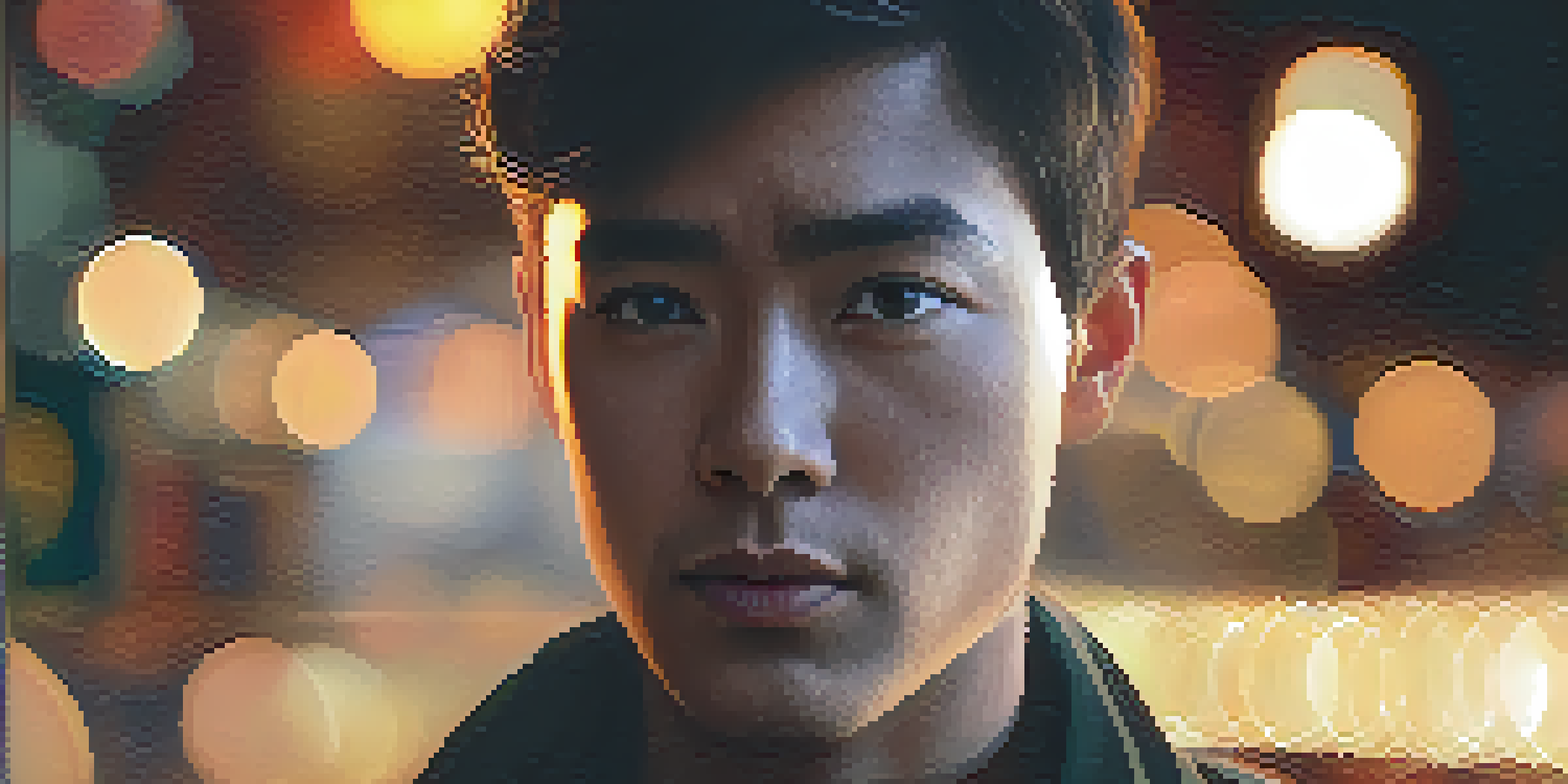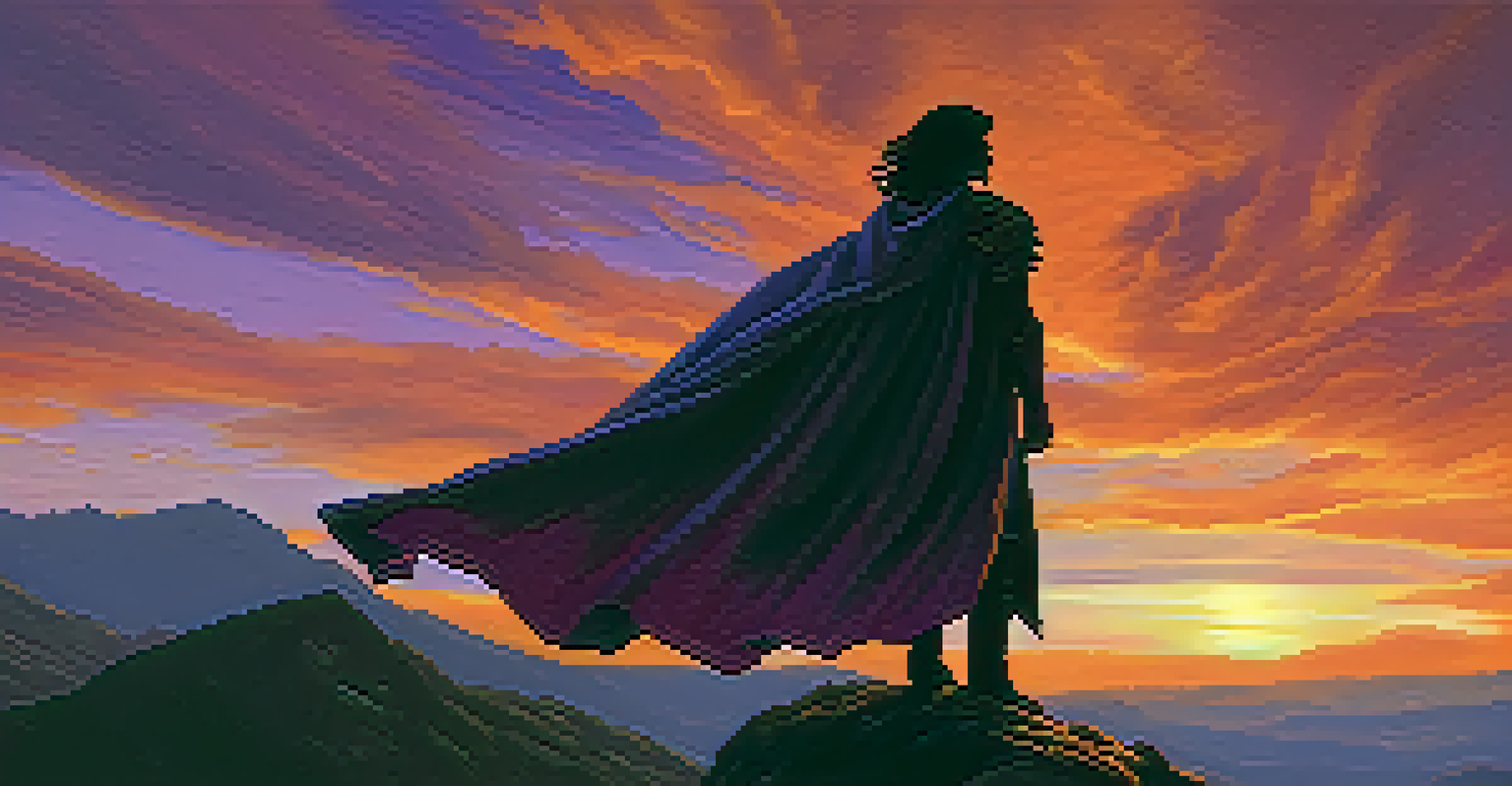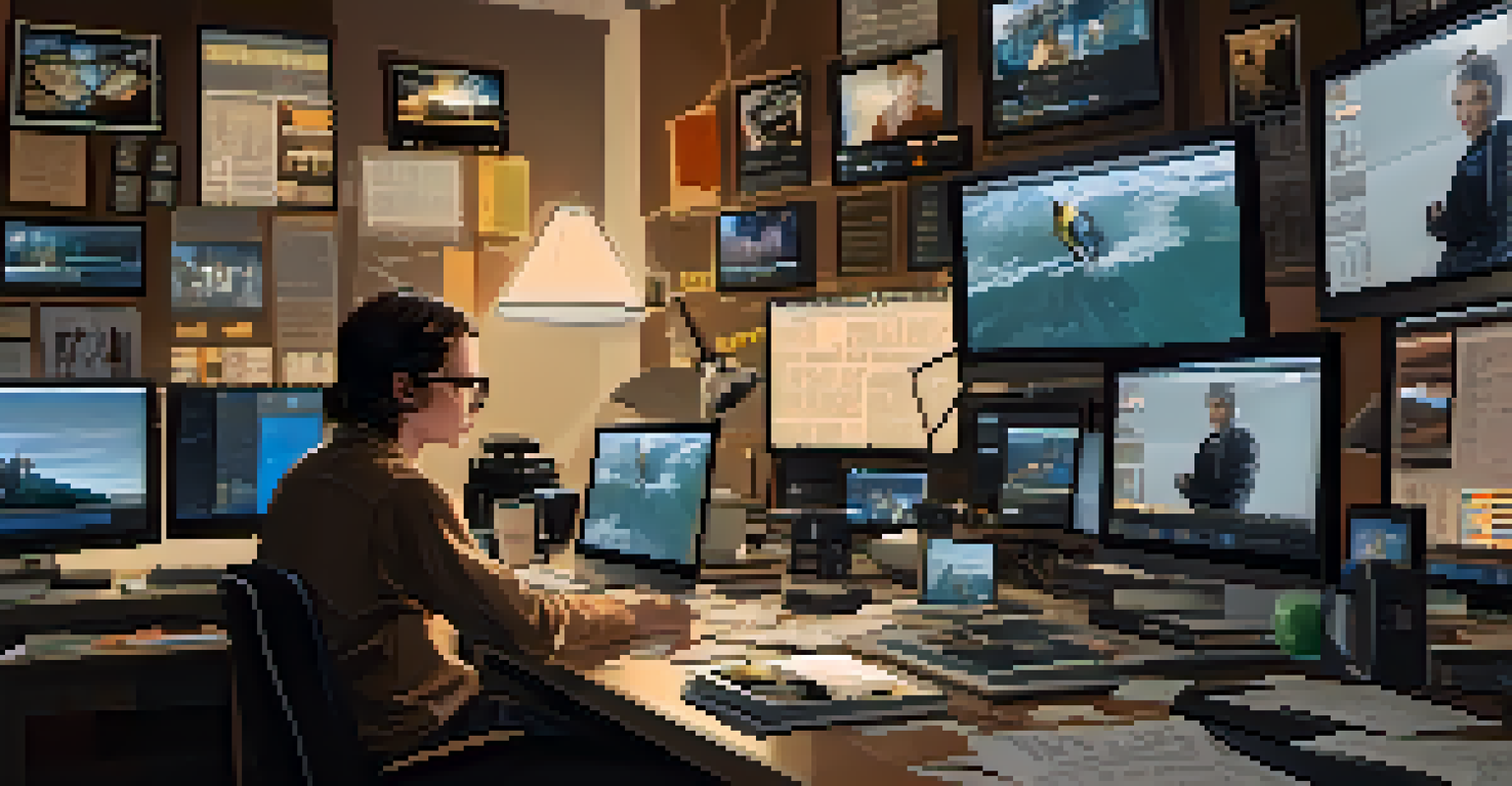The Influence of Cinematic Techniques on Character Development

Understanding Cinematic Techniques in Film
Cinematic techniques refer to the various methods filmmakers use to tell a story visually. These techniques include camera angles, lighting, sound, and editing, each playing a vital role in how a narrative unfolds. Just as an artist chooses colors for their painting, directors select specific techniques to evoke emotions and guide the audience's perception. Understanding these tools helps us appreciate the layers of storytelling in film.
The camera is a powerful instrument. It can reveal a character’s innermost thoughts and feelings, or it can obscure them entirely.
For instance, a close-up shot can reveal a character's inner turmoil, making viewers empathize with their struggles. Similarly, the use of soft lighting can create a warm atmosphere, suggesting intimacy or safety. When filmmakers master these techniques, they effectively enhance the character's journey, allowing audiences to connect on a deeper level.
As we explore the relationship between these cinematic tools and character development, it's essential to recognize that the visual language of film is a powerful storyteller in its own right. Each choice made by the filmmaker is intentional and contributes to how we perceive and understand characters throughout the film.
The Role of Camera Angles in Character Perception
Camera angles significantly influence how we perceive a character's personality and intentions. A low-angle shot can make a character appear powerful and dominant, while a high-angle shot might render them vulnerable or weak. By manipulating the camera's perspective, filmmakers can guide the audience's emotional response towards or against a character.

For example, in a dramatic scene where a hero faces off against a villain, a low-angle shot of the hero can elevate their status, making viewers root for them more passionately. Conversely, if the villain is captured from above, it can instill a sense of foreboding or intimidation. This visual storytelling allows us to form opinions about characters based on their portrayal through the lens.
Cinematic Techniques Enhance Storytelling
Filmmakers use various cinematic techniques like camera angles, lighting, and sound design to evoke emotions and guide audience perceptions.
The subtlety of these angles can shape the narrative without the need for dialogue, proving that what we see is just as crucial as what we hear. Thus, understanding camera angles helps us appreciate how filmmakers manipulate our feelings toward characters and their journeys.
Lighting Techniques and Their Emotional Impact
Lighting is another essential cinematic technique that can dramatically affect character development. Different lighting setups can create various moods and evoke specific emotions in both characters and viewers. For instance, harsh lighting might highlight a character's flaws or fears, while soft lighting can create a sense of warmth and safety.
Sound is the half of the picture. It’s not just an accessory; it’s a fundamental part of storytelling.
Consider a scene where a character is grappling with a difficult decision. If the lighting is dim and shadowy, it can enhance the tension and uncertainty surrounding their choice. Alternatively, bright and natural lighting might suggest clarity and hope, subtly guiding the audience's emotional response to the character's situation.
This interplay between lighting and character can turn a simple scene into a profound exploration of emotional depth. By paying close attention to how lighting is used, we can gain insights into the internal conflicts and growth of characters throughout the film.
Sound Design: Amplifying Character Emotion
Sound design plays a crucial role in shaping how characters are perceived and understood. The right sound effects and music can amplify a character's emotions, enhance tension, or even foreshadow events. For instance, a character's heartbeat might be amplified during a suspenseful moment, drawing the audience deeper into their experience.
Moreover, the use of specific musical motifs can create a connection between the character and the audience. When a familiar tune plays every time a character faces a challenge, it triggers an emotional response, making viewers more invested in their journey. This auditory cue serves as a reminder of the character's struggles and triumphs.
Camera Angles Affect Character View
The use of different camera angles can significantly shape how audiences perceive a character's personality and emotional state.
By utilizing sound effectively, filmmakers can create an immersive experience that resonates with audiences on a personal level. This connection between sound and character allows for a richer understanding of their development throughout the story.
Editing Techniques That Shape Character Arc
Editing is the art of assembling shots to create a cohesive narrative, and it significantly impacts character development. The rhythm and pace of editing can influence how quickly or slowly a character's journey unfolds. For example, quick cuts during an action sequence can create a sense of urgency, reflecting the character's adrenaline rush.
Conversely, longer takes during introspective moments allow audiences to linger on a character's thoughts and emotions, fostering a deeper connection. By controlling the flow of time in a film, editors can manipulate the audience's focus, emphasizing particular character traits or developments that are essential to the story.
The editing process is not just about cutting footage; it's about weaving a narrative that resonates with viewers. When done skillfully, it can highlight significant moments in a character's arc, showcasing their growth and transformation throughout the film.
Symbolism and Visual Metaphors in Character Context
Symbolism and visual metaphors are powerful tools that filmmakers use to deepen character development. Objects or colors can represent a character's traits or struggles, adding layers to their story. For instance, a character who frequently wears dark clothing might symbolize a troubled past, while a bright color could represent hope and resilience.
These visual cues often go beyond dialogue, allowing audiences to interpret a character's journey through their surroundings. When a character interacts with a specific symbol, it can reflect their inner conflict or growth, providing insight into their motivations and desires.
Editing Shapes Character Development
The rhythm and pace of editing influence the unfolding of a character's journey, highlighting their growth and transformation.
Recognizing these symbols enhances our understanding of character arcs, as we begin to see connections between their actions and the visual elements surrounding them. This nuanced approach to storytelling allows filmmakers to convey complex emotions and themes in a more relatable manner.
The Impact of Genre on Character Development Techniques
Different film genres employ unique cinematic techniques that influence character development in specific ways. For instance, in horror films, jump scares and eerie soundscapes can heighten a character's fear and vulnerability. In contrast, romantic comedies often rely on lighthearted music and playful editing to showcase character chemistry and growth.
Understanding genre conventions helps filmmakers choose the right techniques to enhance character arcs effectively. For example, a drama might focus on long takes and emotional lighting, while an action film could prioritize fast cuts and dynamic camera angles to create excitement.

As audiences, recognizing these genre-specific techniques allows us to appreciate the artistry behind character development. Each genre has its own language, and knowing how filmmakers use these tools enriches our viewing experience.